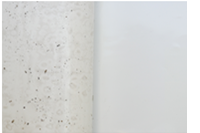1. Brief Introduction
As plastics are generally of electric insulation, static electricity is generated by triboelectrification and remains on the plastic surface by discharge or electric conduction, which can cause such serious accidents as explosion, electric shock and/or fire, etc. if it is excessive.

2. Problems caused by Static Electricity
When static electricity is generated on plastic films, blocking phenomenon that films cling each other occurs. This makes the opening property of films poor and degrades the film quality due to the sticking of fine powder and/or dust on the film surface. Moreover, the sealing property gets poor because dust clings to the film surface when pack the products which generate the dust such as fine wheat flour or coffee, etc.
In case of insulator like plastic, the generation of static electricity due to friction is an inevitable phenomenon, which can be a serious problem in the manufacturing process of plastic products. If static electricity is generated during the manufacturing process of plastic containers, the surface of the containers gets stained due to the adsorption of dust on the surface. It also makes ink spreaded when printing and absorbs dust into the inside of containers in case of foods containers, which results in unhygenic packaging. From time to time, it causes fire. Namely, static electricity is totally an unnecessary phenomenon.
3. Functions of Antistatic Masterbatch
Antistatic Masterbatch is an essential additive capable of solving the above mentioned faults, but it should be prescribed in consideration of its faults/demerits because of a migration phenomenon on the surface of plastic such as slip, which causes several side effects shown hereunder;
- Sticky on plastic surface (Insufficient opening property in case of film)
- Fall of sealing property when used excessively
- Insufficient adhesion when printing
- Beware of yellowish phenomenon in case of keeping white color products for a long period (6 months)
4. Evaluation on Electrification
There are two mechanical evaluation methods and a sensory test method in evaluating electrification.
Mechanical measurement is evaluated by measuring either voltage(V) or resistance(Ω).
1) Voltage measuring method : The voltage in the range of spark occuring due to the generation of static electricity is 10,000v-15,000v. The voltage should remain around 100~500v in order to solve the faults due to static electricity.
2) Resistance measuring method: The resiatance of general plastics is above 10¹⁴Ω. But Antistatic Masterbatch makes this resistance around 10¹º~10¹¹Ω which is good for antistatic.
3) Sensory Test : When plastic products rubbed against fabric come to close to fine dust or cigarette ash, dust clings to the products if antistatic is not treated while a few or no dust clings if antistatic is treated.
5. Features of Antistatic Masterbatch
1) As antistatic agent contained in plastic products mixed with Antistatic Masterbatch migrates to the surface of product as time passed and does the role of antistatic by absorbing the humidity in the air. So, it is recommended to measure the antistatic of the products after 3-5 days passed from the date of production.
2) Antistatic measurement is conducted at the circumstance of 23℃ and 50% humidity. (Electrificating falls in Winter season while going up in Summer season because it is affected by humidity)
6. Grade per Resin & Use.
|
Item |
Grade |
Resin |
Dosage(%) |
Features |
Uses |
|
ES |
330 |
LD/LLDPE |
5 |
good Antistatic at high temperature |
Casting Films |
|
ES |
312 |
LD/LLDPE |
2~2.5 |
Heavy-duty film (Fertilizer Bag) |
for Non-Slip |
|
ES |
316 |
LD/LLDPE |
2~2.5 |
Non-Slip, good Opening |
for Shrinkage Film |
|
ES |
317-5 |
LD/LLDPE |
2~4 |
Less sticky Antistatic |
LD/LLDPE Packing |
|
ES |
311 |
HDPE |
5~7 |
HDPE Films, Good Antistatic |
HDPE Films |
|
ES |
330-S |
HDPE, PP |
5~7 |
for both uses of HDPE, PP |
HDPE, PP Blow |
|
ES |
317 |
PP |
5~7 |
PP Products |
PP |
|
ES |
390 |
PS |
10~15 |
PS Injection Molding, Sheet |
PS |
|
ES |
395 |
ABS |
10~15 |
ABS |
ABS |
|
ES |
N304 |
LD/LLDPE |
4~5 |
for both uses of LD/LLDPE |
Non-migration |
|
